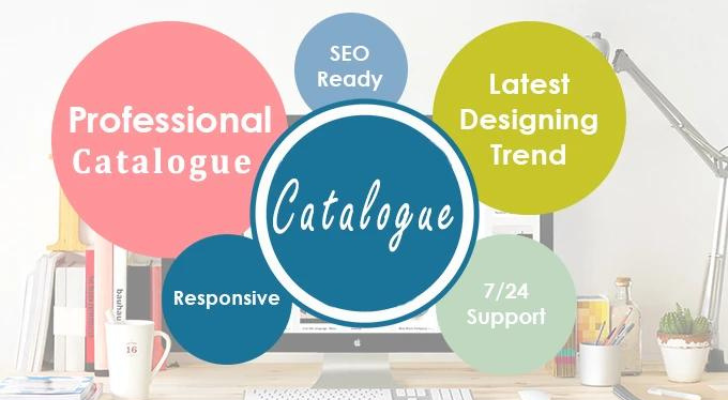Catalog Website

A catalog website serves as a digital showcase, offering users a visually appealing and organized platform to explore products, services, or information. Whether you're presenting a collection of products, showcasing artworks, or highlighting educational materials, creating an effective catalog website involves thoughtful design and user-friendly features. Let's delve into key elements and considerations for crafting a compelling catalog website.
1. Clean and Intuitive Design: Start with a clean and intuitive design that focuses on highlighting the content. Use a visually appealing layout with organized sections, ensuring that users can easily navigate and find what they're looking for.
2. Categorized Content: Organize content into relevant categories and subcategories. A well-structured hierarchy simplifies the user journey and helps visitors quickly locate specific items or information within the catalog.
3. High-Quality Visuals: Visual appeal is paramount in a catalog website. Use high-quality images or multimedia elements to showcase products or content. Ensure consistency in image sizes and resolutions for a polished and professional look.
4. Detailed Product Descriptions: Provide detailed and informative descriptions for each item in the catalog. Include specifications, features, pricing information, and any other relevant details. Clear and compelling product descriptions contribute to informed decision-making.
5. Search Functionality: Implement a robust search functionality that allows users to find specific items quickly. Include filters, sorting options, and a search bar to enhance user experience, especially when dealing with large catalogs.
6. Responsive Design: Optimize your catalog website for various devices, ensuring a seamless experience on desktops, tablets, and smartphones. A responsive design enhances accessibility and caters to users with different browsing habits.
7. Quick View and Product Details: Incorporate a "quick view" feature that allows users to preview product details without navigating away from the catalog page. Include a link to the full product page for those who want more information.
8. User-Friendly Navigation: Enable easy navigation with clear menus and intuitive paths. Visitors should be able to explore different sections of the catalog effortlessly. Consider a breadcrumb navigation trail to help users understand their location within the catalog.
9. Dynamic Content Updates: Keep the catalog content dynamic and up-to-date. Regularly update product listings, add new items, and remove outdated information. This ensures that visitors encounter fresh content each time they explore the catalog.
10. Call-to-Action (CTA) Buttons: Strategically place CTA buttons, encouraging users to take specific actions, such as making a purchase, requesting more information, or downloading resources. Well-designed CTAs guide users toward meaningful interactions.
11. Interactive Features: Enhance engagement with interactive features. Consider incorporating features like sliders, zoom-in capabilities for images, and 360-degree views for products. Interactive elements contribute to a more immersive browsing experience.
12. Analytics Integration: Integrate analytics tools to gather insights into user behavior. Understand which products are popular, track user interactions, and identify areas for improvement. Analytics data helps in refining the catalog and enhancing the overall user experience.
Example Catalog Website Feature:
Product Comparison Tool: Allow users to compare multiple products side by side, highlighting key features, specifications, and pricing. This tool assists users in making informed decisions.


